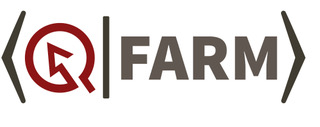Opportunities Abound: IBM Qnet and QED-C
By Jon Candelaria, Executive Director, SystemX
QED-C (quantumconsortium.org)
The Quantum Economic Development Consortia (QED-C) was formed in late-2018 at the directive of the National Quantum Initiative. Its fundamental mission is to help develop the ecosystem to support the growth of the quantum industry in the U.S., and also advise government agencies on how they can play a vital role.
The QED-C, made up of over 150 companies, academic institutions, and national labs, is working to identify the gaps in research and development for quantum computing, communications, and sensing for an incredibly broad variety of applications. Just as importantly it is also helping to develop an end-to-end supply chain, including hardware and software, and help facilitate the creation of a robust and sustainable workforce.
It is organized in to 5 TACs (Technical Advisory Committees): ‘Use Cases’, ‘Enabling Technologies’, ‘Standards and Performance Metrics’, ‘Quantum for National Security’, and ‘Workforce Development’.
Stanford has a great opportunity to not only extract many benefits from joining this consortium but also contribute as a leader in every aspect of its mission.
For example: participating in the TAC workshops aligned with faculty research interests and contributing to their strategic directions, extracting useful information and new ideas, and benefitting from networking with peer institutions, industry leaders, national labs, and government agency representatives all under one umbrella.
Last year I helped lead many new Workforce TAC initiatives including: a webinar series, creation of working groups focused on topics such as: gaming and SciFi film production as new education modalities, curriculum development, workforce re-skilling, workforce pipeline and diversity development, micro-funding support of non-profit initiatives, etc.
We also developed an industry survey which produced data on what the workforce needs are now, how it has evolved, and how it may develop in the future. This information is of great value to universities and government agencies and helps inform new curriculum development activities which are growing rapidly across the country and around the world.
IBM Q-network (ibm.com/quantum-computing/ibm-q-network)
Stanford joined the IBM Quantum Network in late-2019. This membership enables access to all of IBM’s array of quantum computers (at least 19 recently), including their most powerful systems not available to the general public. In addition, IBM provides a complete software program and algorithm development platform, tutorials, application-targeted algorithm suites, etc. The network also provides technical and training support, and research collaboration opportunities with industry partners and other academic institutions around the world.
This is a great opportunity for students and faculty to leverage IBM Q; to-date only a few students have accessed it as part of the CS210 course.
More access opportunities exist; for example, hackathons, outreach to local high schools, game development, student reading groups, etc. There is also a new student-led class which is seeking approval which would also greatly benefit from accessing this network and could help expand access to this unique educational resource and research tool.
I hope to see more initiatives develop at Stanford which can leverage these great resources in the near future. If you’re interested, details are available on Q-FARM's student-resources page.
